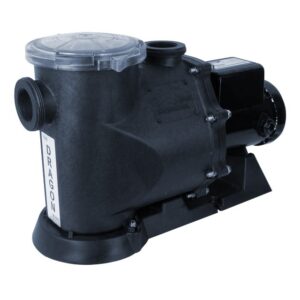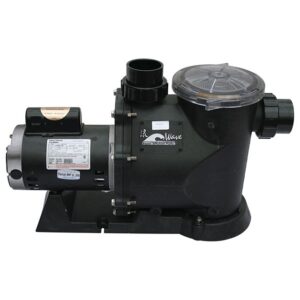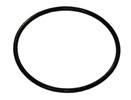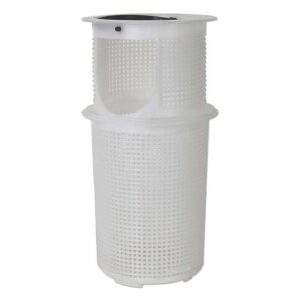Dragon Pumps
Showing all 4 results
- Koi Enterprise
- Koi Pond Equipment
- Complete Quarantine Systems – The advantage of having a quarantine system far outways not having one! However, one limiting factor has always been the price of such a setup. Koi Fanatics has put together this very affordable complete quarantine tank system to take the guesswork of setting one up from scratch. This ready-made tank is a quick fix, it’s an instant complete quarantine tank system!
- Pond Lighting
- Spillways and Weirs
- Aeration for Ponds – Air is a very important item that you need to introduce into any pond, whether this is for a specialist Koi Pond – or just the ‘garden pond’ … every living thing needs oxygen … this of course includes our Koi and also the bacteria that we need to provide for proper biological filtration. We offer many quality air supply products for your Koi pond. By choosing a link above you will be guided through our selection of Koi Pond air pumps, and supplies. Aeration is vital to maintaining a healthy pond or water garden. You can accomplish proper aeration through the use of an aerator, creating waterfalls or fountains. Koi Pond Aeration “Aeration” is the term that we use to mean adding air to the water. Since air contains 22% oxygen, aeration adds oxygen to the water. There are a number of very essential pieces of equipment to consider when planning a pond. None more so than a good reliable quality air pump. So why aerate a Koi pond? A Koi pond is more than a hole in the ground with a liner and some water. In order to have a healthy, dynamic pond environment you also need a…
- External Pond Pumps – Pumps come in an array of models and sizes. Pumps are available in both submersible and external (out-of-pond models). We can help you select the best model and connect equipment for your purposes. For the smaller pond, a submersible pump is the most economical. Pumps are sized by gallons per hour (GPH) output at one foot of lift or height. Larger capacity pumps are rated by horsepower (hp). It is recommended that the water in a basic pond be turned between ½ to 1 time per hour. A 500-gallon pond should have at least a 500 Gallon Per Hour pump. When sizing a pump for a pond there are a few other considerations. How high will the pump have to lift water? Will there be a waterfall, fountain, or statuary? Will there be filters? All of these variables reduce the amount of flow, which could affect water quality and clarity.
- Submersible Pond Pumps – Whether you have a preformed or a liner pond, a pond pump is a paramount component of any water feature. Pond Pumps are available in both submersible and external ( out-of-pond ) models. For the smaller pond (up to 1000 gallons of water), a submersible pump is the more economical and practical option. A Submersible pond pump can be placed directly in the fish pond and require relatively little installation. They are free of distracting noise, and for smaller ponds, can easily be utilized to drain your pond (if you hook up a hose to the output flow of the pump ). The pump is sized by gallons per hour (GPH) output at one foot of lift or height. It is recommended that you circulate your body of water at least once every 2 hours. Therefore you will need to size your pump to ensure that it has half the GPH rating as the volume of your pond in gallons. For example, if you have a 1000 gallon water feature, you will require at least a 500 GPH pump.
- EPDM Pond Liner – When selecting a pond liner, there is no doubt the EPDM pond liners are the best option on the market. For this reason, we carry Firestone PondGard EPDM Pond Liners, the Cadillac of pond liners. Firestone PondGard EPDM is the industry standard for 45 mil EPDM, and for good reason. Firestone PondGard is specially formulated for water gardens. It contains no algaecides & fire retardants found in roofing EPDM. You can always be sure that your pond liner is 100% fish safe if your liner has the Firestone PondGard stamp. Below are the key benefits of Firestone Pond Liner: High flexibility: Firestone EPDM Pond Liners remains highly flexible even at very low temperatures (down to –45 °C), enabling year-round installation in a variety of climates and terrain. Superior weathering resistance: Firestone EPDM Pond Liners offer unmatched resistance to ultraviolet radiation and ozone.
- Fiberglass Tanks & Ponds – Custom crafted specifically for the Koi and Water Garden hobby, these durable fiberglass tanks make excellent quarantine systems. Fiberglass surfaces have been recommended by the Food and Drug Administration for food service handling, so you can be assured that they will certainly meet the requirements of any hospital tank. These tanks will not suffer from the weathering effects that plague typical show tanks when used as a permanent quarantine system. They can even be delivered with plumbing installed which eliminates the need for bulkheads, or tank connectors, and increases reliability. Want a viewing window installed? We specialize in custom work. They can also be used as a smaller display pond. Simply dig a hole, and “drop-it-in” and you have an instant pond. We offer a wide range of Fiberglass Tanks in many shapes, colors and styles. Please contact us for a current quote using our contact form link at the top of this page. Koi Enterprise proudly presents a do-it-yourself approach to pond building. The Complete pond package is desighned as a do-it yourselfer’s dream. this easy plug-n-play deign allows for a fully functional pond in minutes. This versatile pond can be installed free-standing, partially buried, or in-ground. Who says…
- Pond Accessories
- Pond Filtration – Three Stages of Filtration The filter is of key importance in keeping your Koi pond water crystal-clear and free of chemical pollutants. Our line of filters is designed to meet a wide range of needs, for both large and small ponds. Our line of filters provide one or more of three types of Pond Filters and filtration is: * Biological Filtration * Mechanical Filtration * Chemical Filtration Mechanical Filtration: Refers to the physical removal of debris from water by materials that trap large and small particles. Polyester Pre-Filter Pads last longer and filter better than other pre-filtration products, even after several cleanings. Chemical Filtration: Removes pesticides, colors, odors, organic waste, excess nutrients, and other harmful chemicals from your pond. Coconut Shell carbon, Zeolite are examples of products to be used in your filter for chemical filtration. Biological Filtration: This is where your pond filter provides a place for beneficial bacteria to grow on special media. These bacteria remove harmful pollutants from pond water. Known as the “Biological Filter” these beneficial bacteria convert poisonous compounds such as ammonia and nitrite, into less toxic nitrate. The end by-product, nitrate, is used as a food source by aquatic plants. This continuous process is…
- Pond Plumbing
- Pond Sealers & Foam – What is Pond Shield? Simply put, Pond Shield is a specialized non toxic epoxy liner system designed for the pond industry. The days of needing a pond liner to complete your pond are over. If you want to create a pond with a more natural look or you’d like to build a more formal pond, without covering up all of your beautiful work with a pond liner, then our epoxy pond liner system is for you! Savio Black Waterfall Foam is a convenient black colored foam that bonds to most construction materials. This formulation is closed cell and won’t age, harden or shrink. Savio Black Waterfall Foam is perfect for filling and sealing holes and voids for outside applications. Each can of Savio Black Foam delivers about 750 cubic inches of cured foam.
- Pond Skimmers – The first step in building a pond is ensuring that waste products are efficiently removed from the system. The application of skimmers and bottom drains is essential in this regard. Pond Skimmers can remove as much as 85% of debris before it settles to the pond bottom and is the most effective way of reducing maintenance and increasing the quality of water in your pond. The addition of a pond skimmer will greatly reduce the maintenance and increase the enjoyment of your pond.
- Protein Skimmers – The effectiveness of traditional Protein Skimmers or Foam Fractionators in freshwater is restricted by the lower density in fresh water and therefore the ability to form small enough bubbles with enough surface area to attract the organic waste. Since Clarity is based on an entirely different approach, Clarity does not have this limitation. This results in superb efficiency also in fresh water and opens up many exciting applications for Clarity. Regulates the level of oxygen in water During the normal process of feeding fish and decomposing of organic matter, the level of oxygen in the water is altered. These environmental changes are not desirable for the fish and result in increased stress and unhealthy conditions. Clarity’s mode of operation restores the balance of oxygen in the water as part of the process of making the foam. Breaks down ammonia and nitrite to nitrate before foaming As the water trickles down the airing tower, bacteria fastened to bio-rings decompose organic compounds to simpler, less toxic substances. The most important example of this process is the breakdown of ammonia to nitrite and eventually nitrate. This lowers the toxicity of the compounds and results in more effective removal of organic compounds. Compatible with…
- Ultraviolet (UV) – UV Sterilization is the safest method of preventing and eliminating problems in an aquarium or pond. UV will not kill a parasite on the fish, but parasites go through a free-floating stage, at which point they are eliminated. Additionally, corals and fish can and do carry bacteria that can infect and spread throughout the tank, killing other inhabitants. The initial thinking on reef tanks was to avoid UV, to keep plankton alive. However, with the skimmers and pumps used in ponds the plankton population in the water column is virtually non-existent. You can use a UV continuously (recommended) or just keep one at the ready, in the event of an outbreak. Points to ponder about UV Sterilization Most effective when run 24/7. Most effective if the water is clear. Most effective if the bulb is new, or replaced regularly (at least every 6-8 months). Most effective if the UV light penetrates less than one inch of water. Effectiveness can be hindered if the water passes too fast past the bulb. Most effective if the exposure time of the water to the UV light is longer than one second. The effectiveness of UV light can be hindered if there is a…
- Koi For Sale
- Koi Apparel
- Koi Supplies
- Koi Books
- Koi Food – A Koi’s metabolism functions best at temperatures above 70° F. High protein foods are difficult to digest when the waterfalls below 65° F. However, Koi still need sufficient carbohydrates for energy when water temperatures are low. This is particularly true for Koi less than 1 year old. Squash, bread, peas, citrus fruits, and watermelon are good sources of carbohydrates. Never overfeed your fish! Koi do not have a stomach. Feed smaller quantities more frequently for better nutritional absorption. Feed only as much as the fish will eat in about 3-5 minutes. Koi pellets should be fresh and used within three months to prevent the oxidation of the food.
- Koi Medications – Regular observation of your fish will allow problems to be detected early. Being familiar with your fish’s health, normal shape, size, and color as well as swimming habits will help you to keep very healthy fish. A change in any of these factors may signal a problem. The problem must be identified in order to know the steps to take for treatment. Though Koi are extremely hardy, it is very important to keep a watch on their environment to keep them at their healthiest. Attention should be paid to the quality of water and balance of the pond (i.e. pH levels etc.). However, if problems do occur, the first step is to remove the individual fish or decide whether to treat the entire pond. It is sometimes difficult to be aware of a problem with a fish until it’s too late. Be aware of your Koi’s behavior patterns so changes can be detected early. A change in your Koi’s behavior is usually the first sign that your Koi are stressed or ill.
- Test Kits & Microscopes – The water chemistry of your pond is important to understand. It is also important to keep track of the ever-changing water quality readings of your pond. We offer a full line of water test kits, strips, and equipment. When to test. An established pond with healthy fish should be checked every month. It is only when you notice something out of the ordinary, and possibly during seasonal changes, that an additional test or two might be prudent. An ounce of prevention is worth a pound of cure. A simple test, at the right time, can prevent a minor problem from becoming a catastrophe. When starting up a new pond or Bio-converter system, daily tests may be required until the converter comes online, then weekly for a couple of months until the system has stabilized. We offer water treatment products and water test kits to enable you to maintain a quality environment for your Koi.
- Water Treatments – Chlorine and Chloramines Chlorine and chloramines are harmful to fish and will kill the beneficial nitrifying bacteria in the pond. Likewise, they may burn or kill aquatic plants. Chlorine, a volatile gas, will dissipate with water circulation and exposure to the air within one or two days. Chloramines, however, take much longer to break down. City water suppliers are more frequently adding ammonia to combine with chlorine to produce the longer-lasting chloramines. It is not uncommon for city water to test positive for ammonia straight out of the tap. When adding chlorinated water to the pond, spray it in with a hose to provide the necessary aeration for dissipation of the gas. Make sure to use a test kit to monitor your ammonia levels carefully. High ammonia levels cause disease and death. Contaminated Water Run-off water from a nearby stream or collected rainwater may contain toxic insecticides, herbicides, or fertilizers. Rainwater from metal roofs or asbestos shingles will contaminate the pond and may prove toxic to both the fish, and the plants. If the fish display signs of toxicity, execute a 50% water change and/or remove the fish to safe quarters, or a hospital tank until the water has been…
- Koi Resources
- Koi Enterprise News




